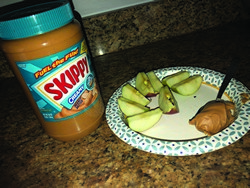Tea is the second most consumed beverage in the world, second only to water. The history and culture surrounding tea is so varied and complex it would be near impossible to cover all its preparations and styles. However, this article will attempt to provide a general understanding of some of the most popular tea styles, how they are enjoyed, and what benefits they may bring.
According to the Encyclopedia Brittanica, tea is thought to have originated in China as early as 2700 BCE, so, needless to say, the history of tea is a long and complex story. From there, tea growing and processing spread to the surrounding area. The first recorded instructions for planting and harvesting tea were found in Japan and date to around the thirteenth century. The first tea was brought to Europe around 1610 by the Dutch East India Company. Tea was officially a hit, by the 1800s it was present on every continent except Antarctica.
The trade routes that tea was carried along actually led to a very interesting vocabulary shift. The popular language blog The Language Nerds talks about a popular saying amongst the linguist community, “tea if by sea, cha if by land”. This saying is in reference to the way trade routes and who was doing the trading affected the word for “tea” that was incorporated into various languages.
“Cha” root words are the most common because the word for tea in Mandarin is pronounced as “cha”. It is likely that the “cha” pronunciation spread across the land and up through the silk road trading operation as native speakers took their “cha” abroad. However, there is a unique dialect spoken in the coastal Fujian province; their word is pronounced “tea”. Therefore, the “cha” pronunciation in languages such as Arabic, and Russian can be attributed to traders taking a land route across the continent while “tea” pronunciations can be tracked to European sea trading from the Fujian province.
Regional differences are not contained to the language used to speak about tea, there are also considerable differences in the way tea is grown and prepared for steeping.
There are many kinds of tea that are only grown in one specific location and therefore have a unique growing and processing method. For example, some regional varieties include Darjeeling, Dimbula and Enshu from India, Sri Lanka, and Japan respectively.
While each variety has its own growing and processing pattern, all kinds of “true” tea are grown from the same plant; camellia sinensis. The real variation of tea comes into effect with different growing, harvesting, and processing methods once the leaves have been picked.
From plant to mug the steps of processing the ever-popular traditional black tea is as follows, according to Encyclopedia Britannica:
The leaves are harvested and then spread out on trays and left to “wither.” This withering process allows the tea to expend some of its moisture and break down into simpler sugars and caffeine.
The next step is to “roll” the leaves until they release their flavors. The rolling process allows the leaves to release their natural tannins and flavors while serving the dual function for breaking the leave up into smaller pieces.
After the leaf cells have been thoroughly broken open by the rolling process the leaves are left for one to two hours to “ferment”, within this stage the leaves are taking in an immense amount of oxygen which contributes to black tea’s signature brown color.
Finally, the leaves are “dried”. Heat is applied to the fermented leaves to help their sugars caramelize and give the tea its characteristic flavor.
These steps are but one example of the many different ways each variety of tea is made. For example, green tea undergoes a similar process as black tea but are never oxidized, which allows them to keep their vibrant green color.
Similarly, leafed green tea is very different from the Japanese matcha, which is a highly processed powdered form of green tea. The styles and preparations of differing blends of tea are near infinite, as are the methods of preparation.
When Americans think of tea their mind is generally drawn to a refreshing version, iced tea. According to the Tea Association of the USA, “approximately 75-80 percent of tea consumed in America is iced.”
Just because Americans prefer iced tea does not mean their selection is in any way limited. There are several iced tea varieties that are uniquely “American.”
The “Arnold Palmer” is an iced tea variety produced and sold by Arizona that combines iced tea and lemonade, supposedly after the famous golfer’s favorite drink on the links.
Another American classic is southern style sweet tea. The tea is steeped in a large pot on the stove and then granulated sugar is poured in to the maker’s preference. Sweet tea is one example of a regional difference within the same country. If you order iced tea in the south, chances are it will be pre-sweetened; however, if you order iced tea in the north, you’d have to sweeten it yourself.
In other parts of the world, drinking tea has become a bit of a social ceremony. There are the obvious examples like England’s designated “tea time” and “tea snacks,” but one example a bit closer to home is the way the people of Argentina consume yerba mate.
According to Sheree Hooker writing for southamericanbackpacker.com, there are several etiquette rules to keep in mind while sharing a mate. Mate, pronounced (mah-tay), is the national drink of Argentina and sharing the name refers to both the drink itself and the gourd that acts as a container. Mate is a loose tea that is paired with a bombilla, a stainless-steel filter straw, to avoid drinking in the loose leaves.
The mate is prepared by a designated maker who serves the rest of the group. The entire group drinks from the same mate with the same leaves. The first cup is generally drunk by the maker, or the cebador, because it is the strongest and most bitter.
Some general rules for communal mate drinking are to finish your share of the mate quickly so as not to make the others wait and to never move the bombilla as you may accidentally fill it with leaves.
This is simply one of the many tea based social traditions that exist across the world.
Matcha, a green tea variety that hails from Japan, has a similarly complex system of preparation. Ikeda Tea World offers some insight into the ceremony. Like mate, the matcha is prepared by a designated host who leads their guests through the ceremony and passes them the chawan, or tea bowl, to drink from.
There are four essential ingredients in a proper matcha ceremony.
First, an experienced host is the best way to go to have the full matcha ceremony experience, someone who knows and respects the tradition is essential to having a meaningful time.
Secondly, the quality of the matcha determines the preparation style and flavor of the tea.
Thirdly, you need to have the right tools. The tools required to mix matcha properly are a chawan (the tea bowl), a chasaku (the tea scoop), and the chasen (the tea whisk).
Fourth, you need to have patience and respect for the experience and culture. The matcha ceremony is a slow process that is meant to highlight the beauty of nature and the simple act of brewing tea as a group and sharing it around your group. To fully experience it you must suspend your judgement and be fully present in the moment of the ceremony, focused only on the current moment.
Because matcha is so delicious, the tea has partially left its ceremonial roots and become more mainstream. Even though matcha has moved deeper into popular consciousness, the experience of brewing and enjoying matcha is still a valued and spiritual interaction.
The accessibility of matcha has opened the experience up to people who would have otherwise never been able to try it. One fan of this cultural exchange is English and elementary education student, Mikaela Manarang, who was introduced to matcha because of its rising availability in the states. She routinely gets the iced matcha latte from the Dunkin’ on campus. Manarang said the green tea gives her an added energy boost without the negative effects of too much caffeine, and the taste is an added bonus. She said, “In general, I’d say it calms me. It really smooths out my day.”
This exposure to matcha has made her eager to try more authentic matcha in a legitimate tea ceremony in the future.
In this way and others, tea is able to introduce us to new cultures and, in some cases, tie us closer to our own heritage.
Finance student, Tahlia Botha, said that her favorite blend of tea has always been rooibos because it reminds her of the time she spends in South Africa when she is able to bring some back from her trip. She also has nostalgic memories associated with rooibos, “My grandma had a special way of preparing teatime for us as kids and I feel at home when I drink it that way when I’m here.” For Botha, the connection to rooibos tea is not only a preference for one type of tea over the other; it is a reconnection to her own familial roots.
Tea is also a growing interest in younger groups. The reverent and cultural experiences people have with tea are of course valid, but seeing tea come into fashion with the youth of the world is fascinating. Recently in America, there has been an increased appreciation for bubble tea (or boba tea, depending on who you ask).
Bubble tea is a sweet transplant from its native Taiwan and is endlessly customizable. In most shops, customers are asked what tea base they want, what flavoring they want, and what kind of boba. The toppings range from the classic tapioca balls to more outlandish options like crème brulèe and cheese foam.
Political science student, Yoshua Morales, outlined why he prefers the Taiwanese drink to other types of tea available in the states. He said, “I like honey milk tea because the more traditionally brewed types of tea are too bitter. The sweetness paired with the satisfying chew of the tapioca boba provides the perfect refreshing taste of tea, sans bitterness.”
This only scratches the surface of the many types of tea around the world and the endless customizations possible once you become familiar with your personal taste. The selection options are boundless; from complex green, to earthy mate, to youthful boba, you never know what you will find in the world of tea. As this new month begins, try a new variety of tea you wouldn’t have considered before—who knows, you might find a new favorite.




